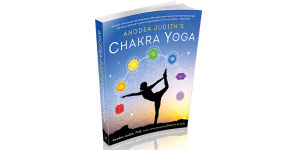1. How long have you been working with the chakra system and how did you originally connect to it?
 I first discovered yoga in 1975. There weren’t many classes then, so I did a lot of reading and I came across writings on the chakra system at the same time. As soon as I read about it, a shot of energy went through my body. I knew I had found a vital key that unlocked many mysteries, yet somehow tied things together in cohesive fashion. Now, 40 years later, I realize those keys were far more profound than I had even imagined at the time. It just keeps getting higher and deeper!
I first discovered yoga in 1975. There weren’t many classes then, so I did a lot of reading and I came across writings on the chakra system at the same time. As soon as I read about it, a shot of energy went through my body. I knew I had found a vital key that unlocked many mysteries, yet somehow tied things together in cohesive fashion. Now, 40 years later, I realize those keys were far more profound than I had even imagined at the time. It just keeps getting higher and deeper!
But what I was reading implied that the lower chakras were bad and needed to be shut down in favor of the higher chakras above. I knew intrinsically that such an interpretation was unbalanced and fueled by a spiritual prejudice that ignores the body and denigrates the earth. Why would we have seven chakras only to suppress the first three? That just didn’t make sense to me.
Now after 4 decades of working with the chakra system through writing, teaching, and private sessions, I am thoroughly convinced that each of the chakras plays a vital role in the journey between heaven and earth, human and divine. You can’t leave out any of the stepping stones on this path and still go the distance. Each one has its own unique role to play in the journey toward wholeness. It really is an archetype for wholeness, something Carl Jung said that each one of us needs as a guide.
The chakra system has been my guiding template and a healing context for millions of others to find their wholeness.
2. How would you describe the chakras in just a few sentences?
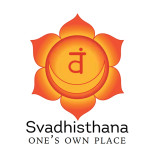 I define chakras as organizational centers for the reception, assimilation, and transmission of life energy. They correspond to the major nerve ganglia branching out from the spinal column, as well as states of consciousness, patterns of behavior, even stages of human history. Metaphorically, chakras are the inner psychic gears that move us along the journey of life. If we want to get up to speed, we need to have all our gears working properly.
I define chakras as organizational centers for the reception, assimilation, and transmission of life energy. They correspond to the major nerve ganglia branching out from the spinal column, as well as states of consciousness, patterns of behavior, even stages of human history. Metaphorically, chakras are the inner psychic gears that move us along the journey of life. If we want to get up to speed, we need to have all our gears working properly.
The word “chakra” literally means wheel or disk, and like a computer disk, each center contains habitual patterns, or “programming,” that enables our life force to interact with different levels of energy, such as physical, sexual, emotional, mental, or spiritual energies. If we have “bugs” in our programs, then we have trouble dealing effectively with one or more of these important levels. When we do the work of cleaning up that programming, our life flows more smoothly at that level.
3. What is the simplest way for someone to become aware of, or make use of, their own chakras?
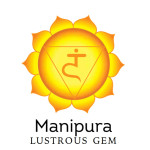 The most direct access is through your own body. Simply tune into the part of your body where a particular chakra is located. For instance, when you feel butterflies in your belly due to nervousness, you are feeling your third chakra, often called the power chakra. When you fall in love, you feel energy in the heart chakra. When you have an orgasm, you are feeling the second chakra. When you feel all choked up and are unable to speak, you’re feeling constriction in your throat chakra. These are very simple, everyday experiences.
The most direct access is through your own body. Simply tune into the part of your body where a particular chakra is located. For instance, when you feel butterflies in your belly due to nervousness, you are feeling your third chakra, often called the power chakra. When you fall in love, you feel energy in the heart chakra. When you have an orgasm, you are feeling the second chakra. When you feel all choked up and are unable to speak, you’re feeling constriction in your throat chakra. These are very simple, everyday experiences.
Once you learn the system, you can then practice exercises associated with each chakra to help open, develop, and evolve that particular center. These practices involve yoga postures, breathing techniques, visualizations, sounding, and taking tasks on in your life.
For instance, as one works through blocks in the throat, their creativity is enhanced. Healing blocks in the second chakra can deepen one’s sexual connection. Opening the heart improves your quality of intimacy in relationship. People’s finances improve when they learn to ground properly and open the first chakra. I’ve seen this happen so many times that I wish I could get a commission! The changes in your inner life can bring profound changes in one’s outer life accordingly.
These are real and tangible results. They don’t happen every time, but often enough that I am amazed at the power of this system when practices are applied.
4. As you travel around and teach your workshops, what do you find are the major issues people have today?
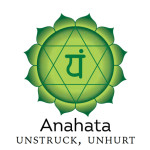 I find that people today are hungry for the sacred, which is why I call my business Sacred Centers. In my workshops, I use yoga postures for each chakra, guided meditations, movement, art, dance, even ritual, to bring someone into an experience of the sacred within themselves and from there into a sacred connection with others. This is what brings about meaningful transformation. It makes it real inside your own body, instead of going home with a notebook full of intellectual knowledge that never gets looked at again.
I find that people today are hungry for the sacred, which is why I call my business Sacred Centers. In my workshops, I use yoga postures for each chakra, guided meditations, movement, art, dance, even ritual, to bring someone into an experience of the sacred within themselves and from there into a sacred connection with others. This is what brings about meaningful transformation. It makes it real inside your own body, instead of going home with a notebook full of intellectual knowledge that never gets looked at again.
Aside from a hunger for the sacred, people want an embodied experience. They want to feel something in their bones and their flesh. Then it is very immediate. And this has always been a challenge for me, because I love the intellect and the realm of ideas so much. But I know the deepest truths are embodied truths, realizations that we feel in the entirety of our being.
As for people’s issues, the most common themes I see is that most people are not grounded; that women struggle with their third or power chakras, and almost everyone claims to have trouble with their throat chakra.
The key is to find balance in each chakra. Chakras can be excessive or deficient – meaning we do too much of something or not enough; compensating for something we didn’t get or avoiding something we didn’t want. Excessive chakras need to discharge their energy or move it to another chakra. Deficient chakras need attention and focus in order the charge up.
5. How do you address these issues?
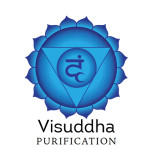 Teaching people to ground is one of my specialties. Having had a life long struggle to fully inhabit my own body, I understand what it takes to find your way home again. Basically, I teach bioenergetic exercises designed to activate the core of the legs, and push the legs into the earth. Works like a charm.
Teaching people to ground is one of my specialties. Having had a life long struggle to fully inhabit my own body, I understand what it takes to find your way home again. Basically, I teach bioenergetic exercises designed to activate the core of the legs, and push the legs into the earth. Works like a charm.
I work with the third chakra power issues with activating exercises that push energy through the body, or expressly trigger the belly area. Also strengthening the belly muscles through core work. Core work also means contacting the sacred “I” that lives inside.
I work with the throat chakra largely through sound—chanting, communication exercises, and journal writing.
And all of the chakras can be accessed through breath, visualization, movement, and focused attention.
6. How would you explain the energy body?
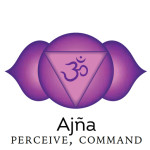 Within this mass of muscles and bones that we call our physical body is an elaborate network of energy flowing through each and every cell. It’s what makes you alive, and what makes you who you are. If you could somehow dissolve the opaque quality of the physical body and see what’s underneath, you would see this network. That’s the energy body, also called the subtle body.
Within this mass of muscles and bones that we call our physical body is an elaborate network of energy flowing through each and every cell. It’s what makes you alive, and what makes you who you are. If you could somehow dissolve the opaque quality of the physical body and see what’s underneath, you would see this network. That’s the energy body, also called the subtle body.
Everything is made of energy, every cell, every breath, every thought. Various traditions call this energy chi, ki, or prana. I call it CHARGE, which stands for: Consciousness Having A Really Genuine Experience.
This energy body is constantly renewing itself, charging and discharging. The chakras are the organizational centers that receive, assimilate and express this energy at different levels.
7. Are there seven chakras?
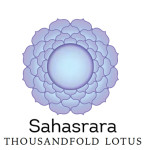 A chakra is a spinning vortex of energy in the subtle body. You might say it is where several pathways come together. The system of chakras with seven major centers is an ancient, elegant, and complete system, covering the full spectrum of human possibility– from our earthly and bodily needs to our highest spiritual aspirations. The chakra system is the architecture of the soul, and the yoke of yoga – the structure whereby the finite physical body is yoked to the infinite divine.
A chakra is a spinning vortex of energy in the subtle body. You might say it is where several pathways come together. The system of chakras with seven major centers is an ancient, elegant, and complete system, covering the full spectrum of human possibility– from our earthly and bodily needs to our highest spiritual aspirations. The chakra system is the architecture of the soul, and the yoke of yoga – the structure whereby the finite physical body is yoked to the infinite divine.
There are people and systems that suggest there are more than seven chakras, and that’s fine – I wouldn’t deny that you can look at it that way since any vortex could be considered a chakra– but I think it dilutes the profound philosophical system represented by the system of seven chakras that map directly onto the body. But even the old texts describe smaller sub-chakras within the basic seven chakras, such as the guru chakra in the seventh chakra or the anandakanda lotus beneath the heart chakra. I also believe we have chakras in our hands and our feet, for example, but they don’t have the same philosophical importance.
8. Where did the philosophy of the chakra system originate?
Chakras come from the yoga tradition of India, most specifically from the Tantric period of yoga philosophy, circa 500 – 1000 AD, though they were probably an oral tradition long before that. The word chakra is Sanskrit, the language of ancient India, and it means wheel or disk. This refers to the spinning nature of the chakras. But I also like to think of this meaning in modern terms, like a floppy disk, that contains vital programming for our beliefs and behaviors.
9. You talk about a liberating current and a manifesting current. What is the difference?
The liberating current moves through the chakras from bottom to top, from the first chakra at the root, to the 7th chakra at the crown. It is called liberating because at every step you free yourself a little more from fixed forms, from limitation, and from density. You can see that if you follow the elements from bottom to top: earth, water, fire, air, sound, light, and consciousness, they get lighter and freer, until you have consciousness, which has no dimension and is everywhere.
The manifesting current starts at the crown chakra and descends, step by step down to the base chakra and the earth. I call it manifesting because it takes what begins as an idea, which is pure conception, and then turns that idea into an image, then words of communication, then brings that idea into relationships with others or co-creation, then activating the will and passion, and finally, anchoring it in the nuts and bolts that ground the vision into reality. If you master the manifesting current, you create your life on purpose, as we discussed in the book I wrote with Lion Goodman, CREATING ON PURPOSE.
We need access to both currents to be whole. In fact the two currents passing each other as they go up and down actually create the spinning of the chakras, which occurs in opposite directions, like gears.
10. What’s an example of a chakra imbalance someone could be experiencing, and how might they work with it in your workshop?
I have created a diagnostic system for the chakras that looks at imbalances as either excessive or deficient (or sometimes a combination of both). An excessive chakra is trying to compensate for something that isn’t working in that chakra, and a deficient chakra is trying to avoid something, or maybe didn’t get enough of something. Both are defenses caused by wounds, but it is not the wound that defines the excess or the deficiency, but how we learned to defend ourselves against the pain of that wound.
For example, if you were wounded in your third or power chakra, you might compensate (become excessive in that chakra) by needing to have lots of power and remain in control, or you might avoid, (become deficient) by steering away from challenges or being too passive. If you were excessive in the first chakra (oriented to the earth and material substance), you would create a heavy body that weighs you down in order to keep grounded, while a deficient first chakra would create body that is too thin and feels ungrounded or unsafe. You can use this diagnostic for each of the chakras.
We then learn about energy and how it flows through the system and how to discharge the excessive chakras and charge up the deficient ones. Contained within the diagnosis is the treatment. For the most part, it’s very simple, yet each person’s pattern is unique.
I believe that opening the chakras and clearing out the blocks creates the possibility of a smooth experience of Kundalini. The reason she can be uncomfortable is that she pushes up against the blocks. As long as we’re holding on, it’s uncomfortable.
11. What is Kundalini and how is it related to the chakras?
Kundalini is the shorter name for Kundalini-Shakti, the primordial goddess of our internal life force, and the energy within everything. As a goddess, she takes the form of a serpent, which travels up and down the core, piercing and awakening each chakra in turn. She is a profound experience of divine energy that is ultimately a healing force, though not always very comfortable.
12. Does everyone experience Kundalini?
Definitely not. It is said that she comes to one through grace, meaning it’s beyond our ability to consciously activate or even de-activate Kundalini. Some people go their whole lives, even with tons of practice, and never experience Kundalini. Some people get it unexpectedly, without even knowing what it is or having done anything to invoke it, and they call that spiritual emergence. But in everyone who has experienced a genuine Kundalini awakening, the experience is profound. That’s about the only thing Kundalini awakenings have in common.
13. Have you experienced Kundalini?
Yes, I have on a number of occasions in different ways. It is not constant for me by any means, but every once in awhile it comes on and takes me over for awhile. I love it when that happens, but it is generally too intense to want to do much of anything but meditate or do yoga.
14. Why do you think the chakras have become so popular today?
We understand now that we need holistic systems that address and integrate all the various parts of ourselves. People are tired of systems that deny the body, deny our spirituality, or fail to deal with the very real psychological wounds that are epidemic in the culture. The chakra system integrates mind, body, and spirit within one comprehensive system. It is a profound formula for the wholeness that we are seeking.
But even more important, it is a path to the Divine, a path that connects Heaven and Earth through the very sacred center of each person. I believe that at this time on the planet, we are being asked to reach up toward heaven through all our limitations and ignorance, and then to bring heaven down to earth, where it can be manifested for the good of all. It is not about endlessly preening yourself on your mat or meditation cushion, but about having a map to higher consciousness that allows you to use that consciousness to create a better reality. There is so much work to do in this world right now, and we need a good map to guide us through the coming years.
15. In your book The Global Heart Awakens, you talk about how humanity is moving collectively from third chakra to fourth chakra, or from the love of power to the power of love? How do you know that? What are the signs?
Everywhere you look, the old power structures are crumbling. Economies are fluctuating, wars are actually decreasing. At the same time a new organizing principle is arising: one based more on equality and kindness, cooperation rather than competition, a web of connection rather than a chain of command, as we can see through peer to peer networking, open source enterprises like Wikipedia, and of course the huge online social networking sites. We are slowly growing up, facing our initiation into planetary adulthood. As the old system is falling, the healers and teachers and true servants of humanity are leading us to a new way of living on every level: politics, education, economics, science, health, religion, and technology.
16. What do you hope to achieve with your newest book on Chakra Yoga?
I see this book as a guide for teachers and students alike. Arranging your practice or your classes by the chakras puts everything you do in a very sensible context, from finding one’s ground, to opening to others, activating your power, opening your heart, speaking your truth, seeking a vision, and liberating your spirit. Anyone, no matter where you are on the path, can learn from this.
I’ve been in the yoga world for 40 years. I’ve seen the yoga movement grow from occasional classes of a few people in someone’s living room, to the mega-business of goods and workshops that it is today. People just discovering yoga often think it is just an exercise routine. I hope to bring the deeper meaning of yoga in a way that relates directly to people’s lives, chakra by chakra.
17. Do you have some parting words?
We are being called forth to play in a grand symphony of creation together. But to play in the symphony we need to practice, practice, practice. The ancients have handed down practices to help us mature and develop. I don’t believe we need a lot of elaborate, painful, or time-consuming practices to enjoy what life has given us, but we do need some practices to keep us on track. We need to heal the divorce between matter and spirit, mind and body, and awaken to our divine natures. The body is a vehicle equipped with everything we might need for this spiritual journey.
Inherent within each of us is an archetype of wholeness that will take us home to our fullness if we allow it and trust it. The chakras integrate mind, body, and spirit into within a full spectrum experience. When we use this system as a map for our journey, there is a greater opportunity for wholeness to emerge. That wholeness can change the world.




